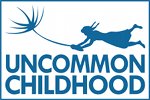New Zealand National Aquarium: Learning about land and sea!
February 25, 2013 in New Zealand, Oceania, Travelogue
The New Zealand National Aquarium is not, as one might predict, in Auckland. Instead, it’s nestled on the peaceful shore of Hawke’s Bay in the seaside city of Napier. We decided to visit because they’ve got local penguins, and Ezra has had a particular interest in these flightless birds since he did his first research paper on them a couple of years ago.
It’s not a big aquarium, but it’s full of local charm, with a focus on local creatures, both land and sea.
Among the highlights was the very dark room where we peered through sound proof glass at two, rare, kiwi birds poking about in their artificial nighttime habitat. The Kiwi is New Zealand’s national bird, but it’s on the verge of being endangered.
Kiwi Fun Facts:
- These birds are nocturnal
- The female produces the biggest egg, relative to her size, of any bird on earth (450g)
- The egg takes 30 days to form and is 65% yolk (most eggs are 30-40% yolk)
- A newly hatched kiwi can live on that yolk for a full week after emerging
- The males incubate the eggs
- The female can barely walk and cannot eat the few days before she lays the egg
- Female kiwis have been observed soaking their stretched, sore bellies in cool streams in the days before laying their enormous eggs (I don’t blame them!)
- They eat insects, worms, grubs and other small bits found on the ground layer of the forest
- They cannot fly, but they run quite fast
I stood for a long while in front of the sea horse tank. I’ve seen other sea horses in zoos and aquariums, but I long to see one in the wild. I’ve sent our dives this winter actively looking. Evidently there are many around the shores of New Zealand, specifically around Napier, and it almost made me want to plunge into the cold sea with my mask and snorkel to have a hunt; almost.
Seahorse Fun Facts:
- The female seahorse transfers her eggs to the male’s pouch where he fertilizes them, gestates and gives birth
- They have no teeth and eat by sucking in very small creatures
- They are very social animals; where there is one, there are likely to be many
- They live in sea grass where they hold on with their tails
The penguins were somewhat anti-climactic for Ezra.
When asked why, he responded, “Well, I just kind of hoped they’d be more like the bigger Antarctic penguins….” Which precipitated a long conversation about the broad range of habitats and adaptations for each which resulted in these “Little Penguins” living along the shores of Hawke’s Bay. He did collect a few penguin facts for our little friend Celia, perhaps your kids will be interested as well:
Penguin Fun Facts:
- Little Penguins (their official name) live in burrows underground, or in caves or between rocks
- They live 8-10 years in the wild, up to 20 in captivity
- Little penguins only get about 30 cm long
- They live along the coast of NZ and the southern coast of Australia
- They eat small schooling fish and squid
- Both parents take turns incubating the egg
- Baby birds leave the nest at about 55 days old
- The Little Penguin is the smallest penguin in the world
Oddly, for an aquarium, there was also a small exhibit dedicated to the life’s work Joan Wiffen, of a local woman who is an amateur archaeologist and who is single handedly responsible for the discovery of dinosaur remains in New Zealand. Apparently there were many aquatic dinosaurs in the seas surrounding these islands, but it has only been very recently that the remains of land based lizards have been found.
What struck me about the exhibit was the extraordinary pluck and determination of Mrs. Wiffen.
She didn’t get interested in fossils until well into her fifties, and in her mid seventies, she’s still going strong and building a reputation for herself as the premier expert in New Zealand on large boned dinosaurs. What an inspiration!
Her life reminded me, that no matter what we have done, or have not done, in our lives, each day is a new day and as long as we are still breathing, we can be adventuring, learning, chasing our passions and making a difference in the world, in big and small ways. If a grandma can make the biggest archeological finds in the history of her country, with no formal training, only a love for her work, then how much more can our children do if they start early? How much more can we do if we start now?
It would be easy to overlook the National Aquarium in Napier, but I hope you won’t. It’s a great place to “get your feet wet” in exploring the marine and animal life that is unique to New Zealand and a wonderful place to take the kids for an afternoon! Hannah’s favourite: the oceanarium you walk through, surrounded by sharks!





 RSS - Posts
RSS - Posts


























Wow, very inspirational; there’s time for me yet! I was telling my six year old the fun facts about the penguins and she decided they would prefer to live 8-10 years in the wild, than 20 years in captivity. I must be doing something right.x
Melanie… I love that… me too… give me the wild any day!